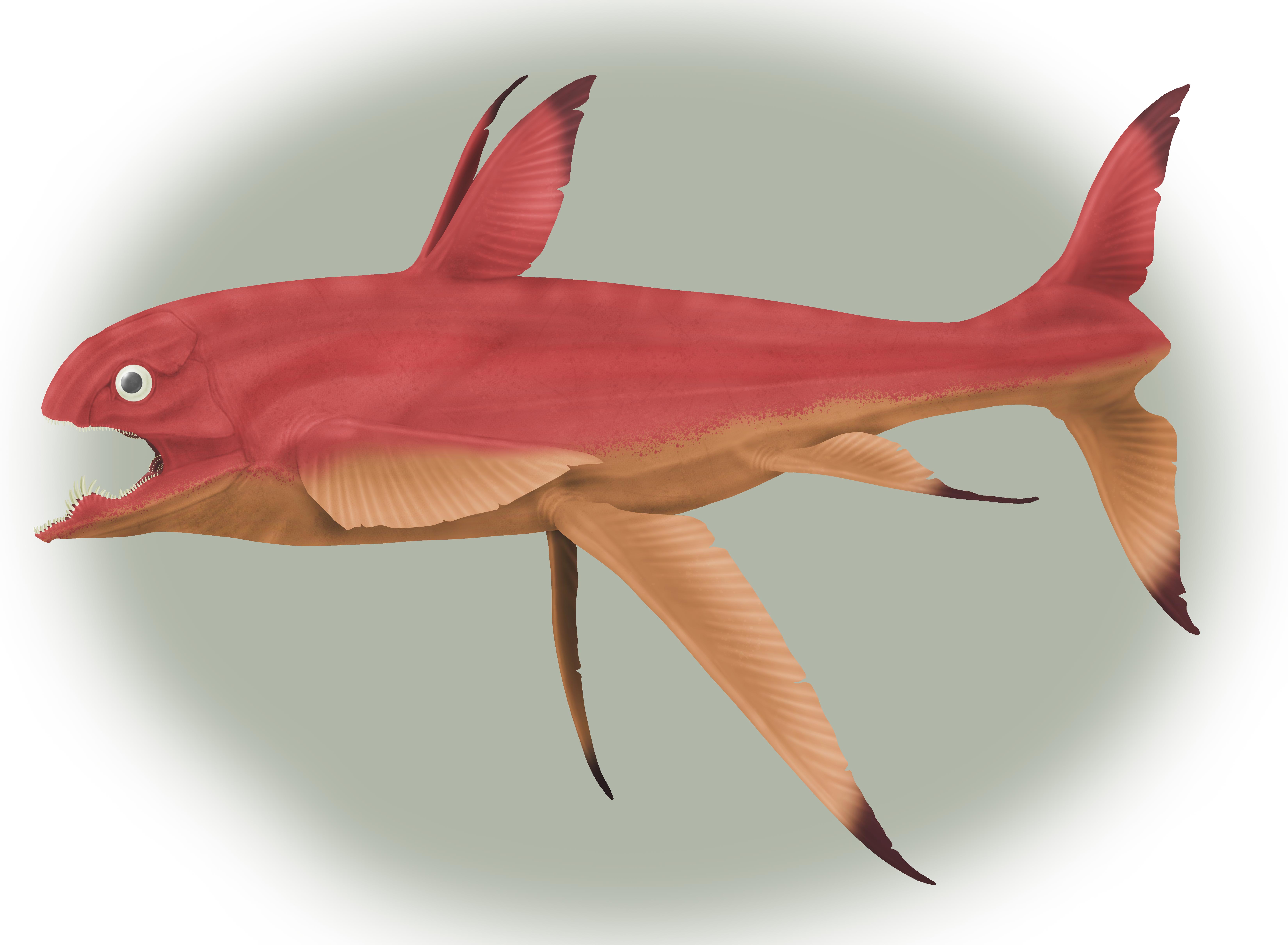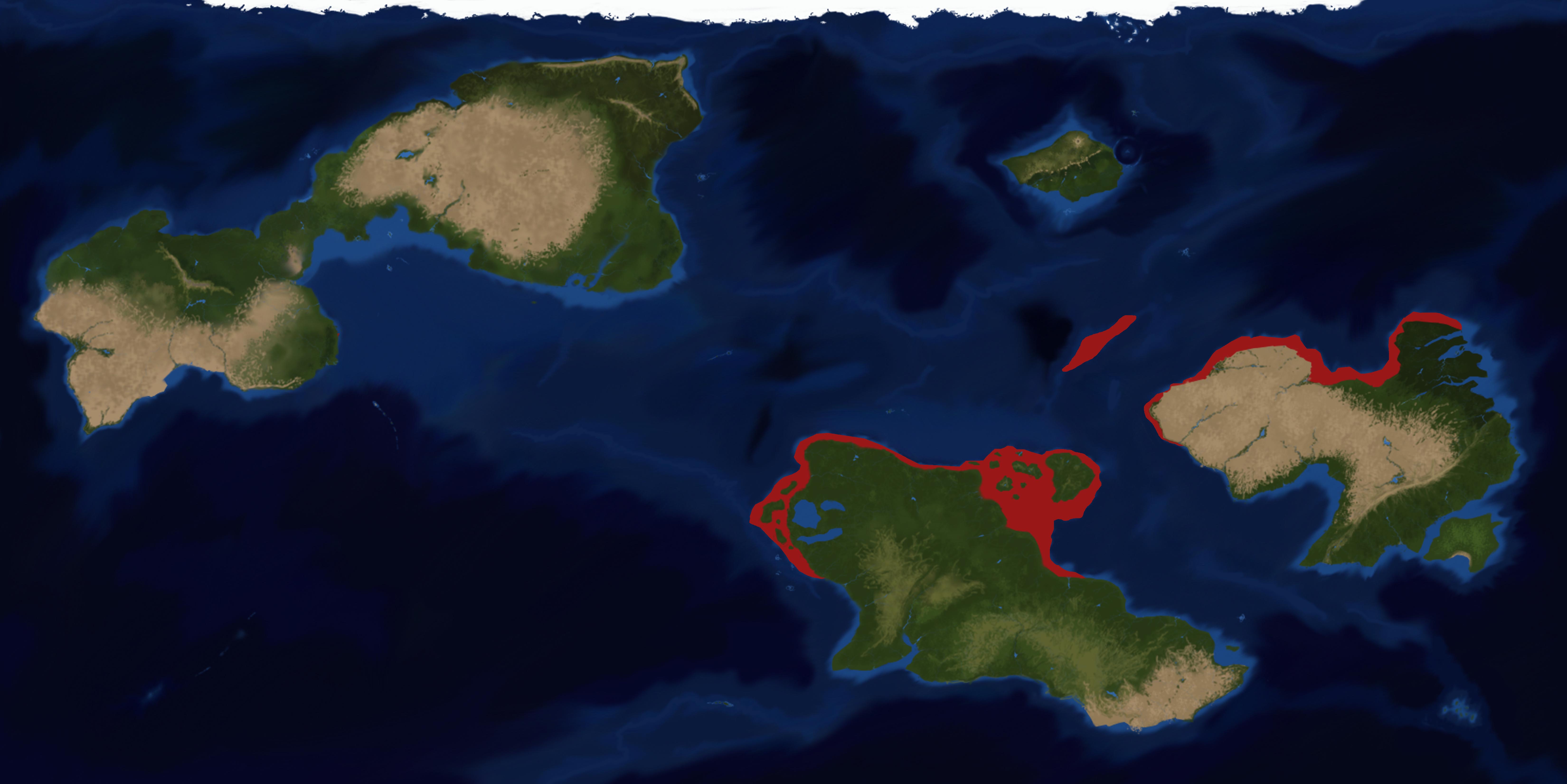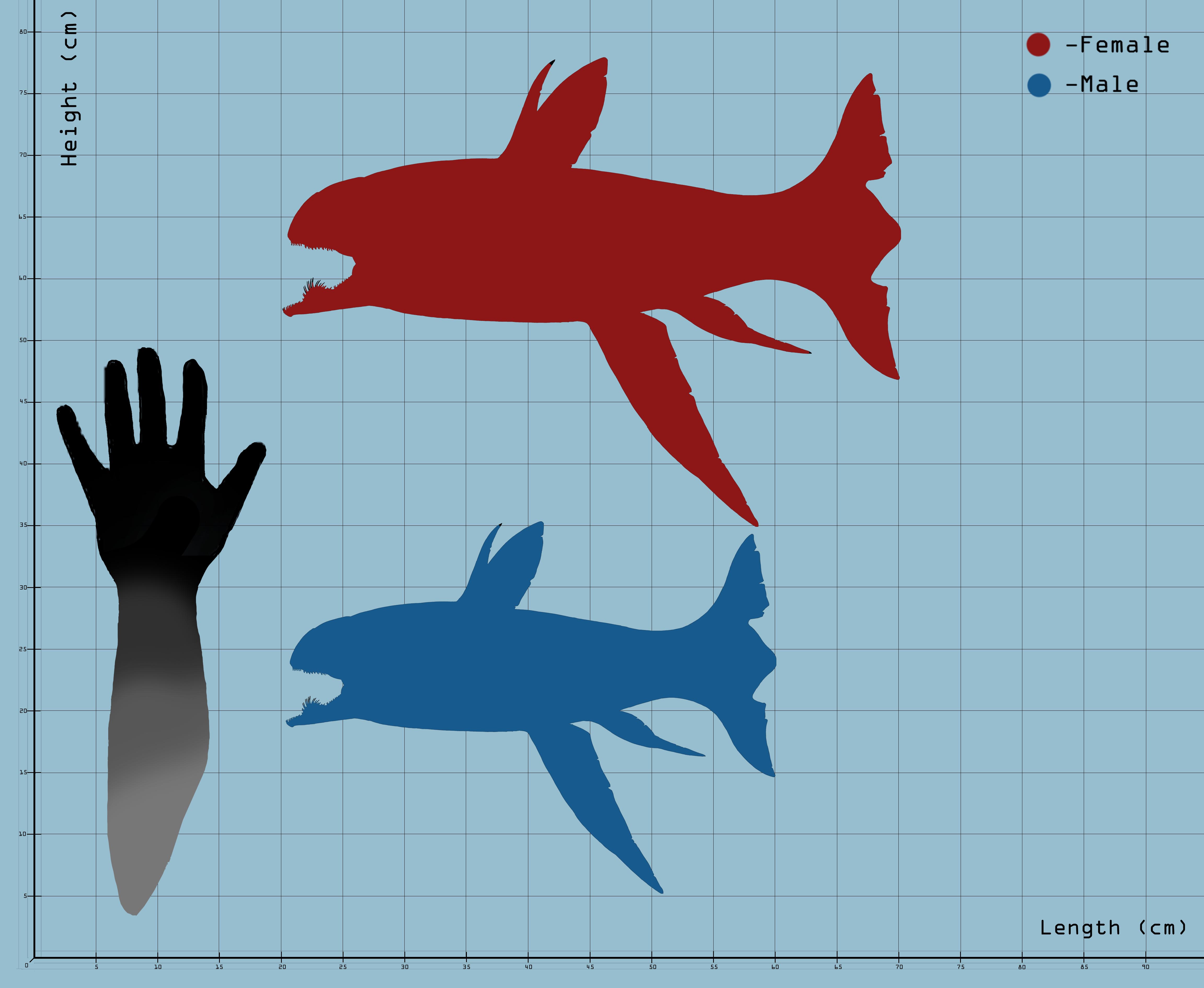Paraxenognathus altus
P. altus is a reef inhabiting genus of Cuspinninidae (Selenopiscoidea, Cuspinninidae) characteristic of the southern hemisphere.
Most notably known for the peculiar jaw structure extruding in the mid section of the dentary, this small to medium sized amphibian has a very opportunistic diet, ranging from plant foraging and hunting to scavenging carrion.
A particular species of Paraxenognathus only found in the north eastern union’s seas is known to feed on bubble tree’s syrup that it extracts from the bubble leaves, giving it a particularly bright coloration not seen anywhere else.
P. altus is also one of the few genus of Selenopiscoidea to have a fully developed cranial armor, a trait it retained from its ancestors and that has been lost in sister taxa such as the Esavelidae or the Asthomatosinae.
This particular genus has been thriving in spite of the ever more rapidly increasing human impact on its natural habitat.
Even though being found commonly in fishermen’s nets, P. altus has a sour taste and is often considered almost inedible and thus trashed by many who catch it outside sport fishing events.
The species saw a limited genetic bottleneck as some school's migratory patterns have been disrupted by anthropic activities, preventing usual spawn mixing in the usual nesting sites.
Basic Information
Anatomy
- Cranium dorsally rounded; evident extrusion of the reabsorbed supraocular plate forming a posterior brow extending laterally.
- Jaw longer than the Maxilla; strong extrusion on the mid section of the Dentary bone.
- Cranial armor Pseudoabsorbed with clear distinction between some plates.
- Pectoral fins large and slightly ventrally orientated in rest position.
- Dorsal fin paired.
- Anal I overdeveloped, Anal II almost atrophied growing from the base of the Gill tail.
- Short and high Gill tail terminating in a high Gill Fan with pronounced ridges.
- Caudal fins present but severely reduced.
Genetics and Reproduction
Polyandrous species.
This animal will enter heat once every two months.
The males will stay in the active stage for two weeks, during which certain visual changes will happen to signify their receptivity; mating males will have their parapenis swallen and restracted, it will assume a bright blue coloration; the fins tips become more vividly colored.
Females will be receptive for three weeks and a half; Active stage females have a brighter overall coloring and bright blue marking around the entrance to the duct.
Males will congregate around a single female (up to six males per female) and start mating with her with the dominant males in the group taking priority; dominance is dictated by the size and color of the parapenis.
The female will harbor the eggs inside the duct for seven days before laying them in floating forests and abandoning them.
Said floating forests act as nesting sites for several schools at once, so the spawns will be from different schools mixed.
The eggs will hatch twentytwo days later, the hatchlings will feed on Zoophytoplankton for the first half of the growth period.
Growth Rate & Stages
New born P. altus will filter feed on Zoophytoplankton.
Five days after birth they'll start cannibalizing the smaller spawns and foragin on fresh buds in the forest.
Ten days after being born the young individuals will separate in schools and leave the forest.
Loss of natal aculeus at the second day of life.
Ecology and Habitats
Epipelagic species of amphibian living at depths between 0 and 180 m.
Prefers warm waters with plenty of sunlight and possible nesting areas.
Dietary Needs and Habits
Opportunistic animal.
Eats anything from plants to carrion.
Known to be cannibalistic.
Biological Cycle
Periannial creature with few major dips in activity during the year.
Skips one mating season every winter, although which one is not fixed.
Additional Information
Social Structure
Social animal living in schools averaging from 30 to 60 specimens.
Social interactions in the group very complex with a clear local hierarchy between singular interactions.
Specimens often interact and communicate inside the school or between two schools that meet each other.
Very skittish towards humans and will avoid direct contact, however they have been known to be potentially aggressive towards divers who act in ways they could consider threatening.
Domestication
A popular aquarium amphibian due to the colors and ease to maintain.
Uses, Products & Exploitation
Mainly sees success in the pet trade and as game for sport fishing, otherwise inedible and discarded by fishermen or used as chum to lure in more appealing prey.
Geographic Origin and Distribution
Bubble sea, Reefs of the Irobian Ocean to Meadow Island.
Small populations on the west coast of New Japan and the Union, Nuwadi Ocean.
Perception and Sensory Capabilities
Very good sight.
Symbiotic and Parasitic organisms
Affected by several skin parasites and Drinker worms.
Scientific Name
Eoichthyia; Tartarosomnia; Rotunducephalidae; Gladiopinneoidea; Quadratocephaloidea; Selenopiscoidea ; Cuspinninidae; Xenognathinae; Paraxenognathus; P. altus
Lifespan
8 years
Conservation Status
Least Concern: no measures underway to protect this species
Population trend: STABLE
Average Weight
300 gr to 7 Kg
Body Tint, Colouring and Marking
Rusty colored to Red body with Brownish to Bright Yellow countershading.
Darker markings on the fin's tips (excluding the pectorals).
Remove these ads. Join the Worldbuilders Guild












Comments